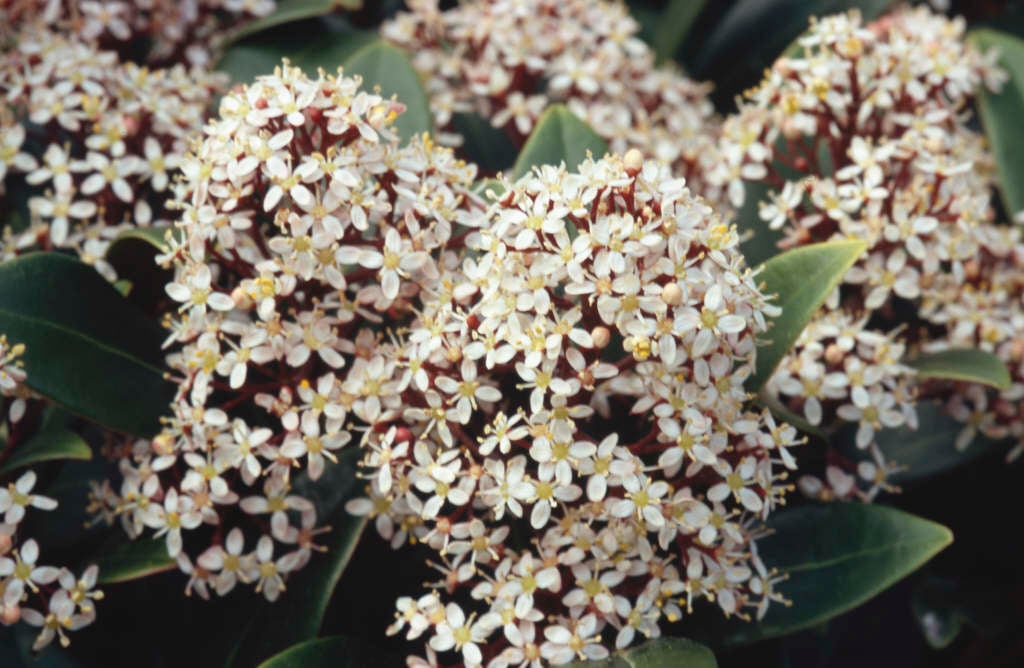Skimmia reevesiana var. rubella

skimmia 'Rubella'
A small, bushy evergreen shrub with dark green, elliptic leaves to 10cm long. Panicles of red buds, showy in late winter, open to fragrant white flowers in early spring
Size
Ultimate height
1–1.5 metresTime to ultimate height
10–20 yearsUltimate spread
1–1.5 metresGrowing conditions
Moisture
Moist but well–drainedpH
Acid, NeutralColour & scent
| Stem | Flower | Foliage | Fruit | |
| Spring | Red White | Green | ||
|---|---|---|---|---|
| Summer | Green | |||
| Autumn | Green | |||
| Winter | Green |
Position
- Partial shade
Aspect
North–facing or West–facing or East–facing
Exposure
Sheltered Hardiness
H5Botanical details
- Family
- Rutaceae
- Native to GB / Ireland
- No
- Foliage
- Evergreen
- Habit
- Bushy
- Potentially harmful
- Fruit are ornamental, not to be eaten. Wear gloves and other protective equipment when handling. Pets: Fruit are ornamental, not to be eaten - see the HTA guide to potentially harmful plants for further information and useful contact numbers
- Genus
Skimmia are compact evergreen shrubs with simple, aromatic leaves and terminal panicles of small white or yellowish flowers followed, on fertilised female plants, by shiny red berries; most have male and female flowers on separate plants
- Name status
Accepted
How to grow
Cultivation
Grow on a good neutral to acid soil with added humus (from leaf mould or well-rotted manure). They will also tolerate a chalky soil that has been improved with well-rotted organic matter. Avoid full sun which can cause yellowing of the leaves
Propagation
Propagate by semi-ripe cuttings with bottom heat in late summer
Suggested planting locations and garden types
- City and courtyard gardens
- Coastal
- Cottage and informal garden
- Wildlife gardens
- Low Maintenance
- Flower borders and beds
Pruning
Pruning group 8 if necessary
Pests
May be susceptible to scale insects, and to vine weevil when grown in containers
Diseases
May be susceptible to Phytophthora and honey fungus
Love gardening
Sign up to receive regular gardening tips, inspiration, offers and more
View our Privacy Policy
Get involved
The Royal Horticultural Society is the UK’s leading gardening charity. We aim to enrich everyone’s life through plants, and make the UK a greener and more beautiful place.

